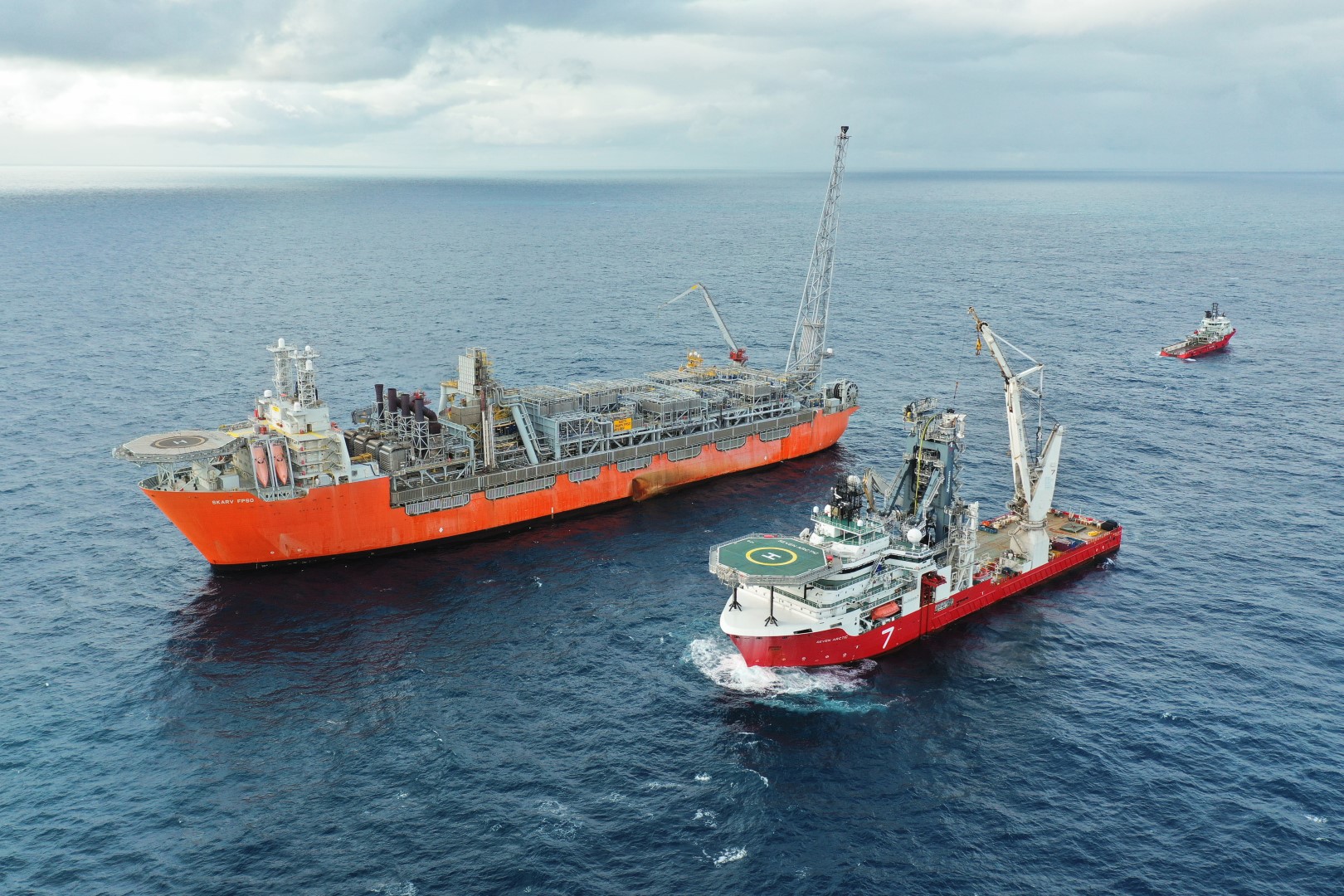Ærfugl reduces CO2 per barrel by up to 30 percent on Skarv FPSO
The Ærfugl project shows how profitable developments go hand in hand with low CO2 emissions.
Aker BP manages natural resources to create value. This is why Aker BP is maximising value by utilising available resources in the best possible manner, keeping costs low and emissions at a minimum. To reach these goals, the people in Aker BP always strive to outperform themselves by always doing their very best and always seeking improvement. The Ærfugl project is an excellent example of what they do and how they do it.
Delivered as promised
Ærfugl is an almost 60-kilometre-long narrow gas and condensate field in the Norwegian Sea. It is located near the Skarv field, about 200 kilometres west of Sandnessjøen.
On 12 November 2020, operator Aker BP and partners Equinor, Wintershall Dea and PGNiG reported that production had started from Ærfugl Phase 1. This was on the same date as promised in the Plan for Development and Operation (PDO) in 2017.
Aker BP, along with its alliance partners, suppliers and licence partners has not only completed the project safely, efficiently, on time and within budget during a time with a “black swan”; COVID-19 and a substantial decline in the price of oil; it has also achieved major improvements since the PDO was approved, including significantly accelerated development of Phase 2, from 2023 to 2021, and improved project economy.
Lower break-even
Ærfugl is the first new field tied back to Skarv, and it is expected to increase the gross asset production from around 85,000 to 140-150,000 barrels of oil equivalent per day.
When Ærfugl Phase 2 is completed, the CO2 emissions per produced barrel of oil equivalent on Skarv will be reduced by up to 30 per cent by 2022. This is due to the increased share of production from Ærfugl. In addition, the production from Ærfugl comes in at high inlet pres-sure before processing, which eliminates the need to run an extra compressor to export the gas to the pipeline.
Ærfugl has become one of the most profitable development projects on the Norwegian continental shelf. The initial estimated break-even price was USD 18.5 per barrel of oil equivalent (converted from gas) at PDO submission. Due to increased reserves, earlier production, a stronger dollar and accelerated tax depreciation, the break-even price has improved to less than USD 15 per barrel.
Innovative alliances
Ærfugl is an alliance project, and three alliances have been involved in the execution. Innovation has allowed the alliances to adopt new technology. They built the first digital twin of both topside, wells and subsea, and set up a large degree of automation. They also installed the world’s first Electrically Heat Traced Flowline (EHTF).
In the alliances, Aker BP works with the best suppliers in a long-term perspective. Together they succeed by working in an integrated team. All alliance partners are equal, they share risk and have incentives that reward all parties when they deliver. They reap the best experience and knowledge from each other and put the best person on the job – regardless of company. Mutual respect and trust enable them to own challenges and solutions together. This is exactly what alliances are all about. It is not them and us, it is one team.
Aker BP’s goal is to produce oil and gas as efficiently as possible to return greater value from our oil and gas resources to investors and society. The successful start-up of production from Ærfugl Phase 1 demon-strates the ability to deliver on this strategy through the excellent performance shown by the Aker BP project team and alliance partners, despite extremely challenging times.
